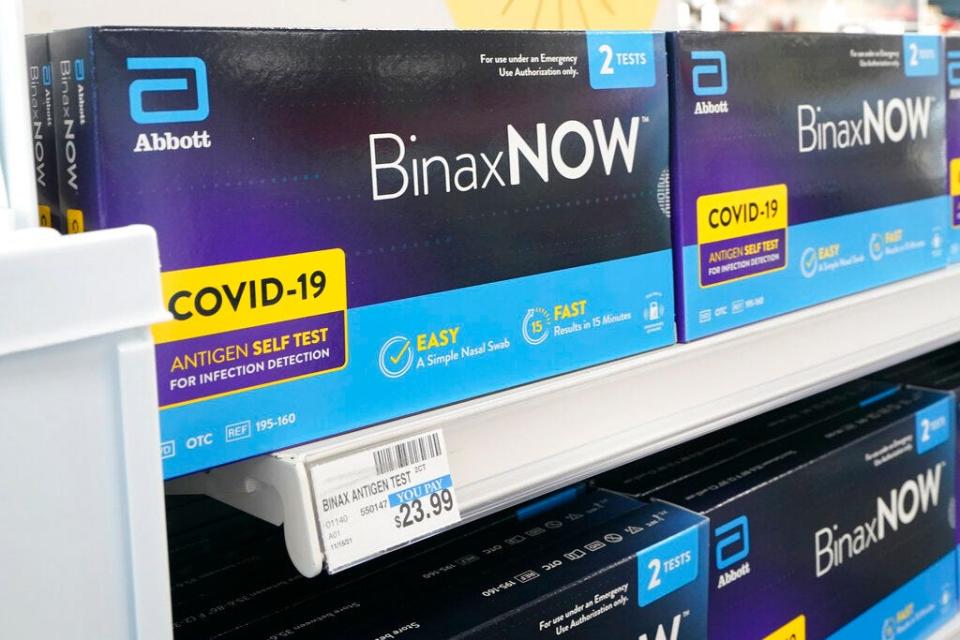We looked for at-home COVID tests in Randolph County, here's what we found.
A surge in COVID and its many variants have left millions of Americans scrambling for at-home COVID tests; while decisions made over the summer leave them empty-handed.

Within the first week of January 2022, Randolph County had a reported 864 cases, according to the North Carolina COVID-19 dashboard.
Where can you find a test in Randolph County?
I hunted for at-home COVID test kits within Randolph County pharmacies on January 10, 2022. The results offered me with few options; Check out where you can get a test kit below.
Walgreens offers curbside pickup and delivery but does not have any at-home tests available to purchase online or in-stores in Randolph County.
6525 Jordan Rd., Ramseur is completely out of at-home kits and does not know when they will restock.
1107 E. Dixie Dr., Asheboro has not been able to receive any at-home tests for nearly a month. According to an employee, they are waiting for test companies to fill their pending orders for more tests.
207 N. Fayetteville St., Asheboro, does not have any tests but customers in need should check back in a few days.
CVS Pharmacy sells five different tests, including one PCR and four antigen tests. But, into the second week of January, they were completely sold out of all but one kit online. CVS also offers both curbside pick-up and delivery for at-home COVID tests bought online. Tests start at $9.99 for antigen testing plus a $5 shipping fee. Customers can expect their kits to arrive in two to six days.
440 E. Dixie Dr., Asheboro, is completely out of tests for at least two weeks.
215 S. Main St., Randleman, may receive at-home tests in the next two weeks but are out for now.
285 N. Fayetteville St., Asheboro, is out until next week.
Why is there a shortage of at-home tests?
The shortage of tests is a result of several factors: a surge of demand due to the high transmissibility of omicron, the holiday season, and the nation’s overall lack of preparedness.
Health officials say that the lack of demand for tests in the summer and fall led to companies slowing down their manufacturing. Companies such as Abbott Laboratories, which makes the BinaxNOW rapid test, had laid off thousands of workers and discarded millions of tests, citing a lack of demand as a reason.
The shortage was only worsened by schools and workplaces buying substantial amounts of testing kits to reopen, and the Biden administration prioritizing vaccinations.
In December, Biden promised 500 million at-home tests would be made available and sent to homes for free, but the timeline of that remains unknown.
When should you get tested?
The Centers for Disease Control and Prevention says that transmission of COVID-19 usually happens one to two days before symptoms appear, and the virus could also still be transmitted two to three days after symptoms. COVID-19 symptoms can start happening anywhere from two to 14 days after exposure.
Those unvaccinated should get tested immediately after contact with someone that has the virus. If results come out negative, get tested again after five days, or immediately when you feel any symptoms.
Those who have been fully vaccinated should test immediately when experiencing any symptoms. Even without symptoms, those vaccinated should still get tested five days after your exposure.
If you have tested positive, you will need to quarantine for five days per the CDC guideline that was recently updated last week from 10 days. The day you were exposed is considered Day 0.
What are the differences between each at-home COVID test?
A PCR (polymerase chain reaction) test is a type of molecular test that often requires a patient sample to be sent to a lab for analysis. Results can take anywhere from several hours to days after being received at the lab. A PCR test can sense low levels of viral genetic material, such as RNA, so these tests are usually highly sensitive, which means they are good at detecting a true positive result.
An antigen test, or rapid antigen test, detects viral proteins and provides results in less than an hour. Antigen tests tend to be less sensitive than molecular tests, but you are able to get results more quickly.
Starting this month, most people with health insurance can get at-home tests for free through either reimbursement of up to $12 or through insurance coverage, according to the Centers for Medicare and Medicaid Services. This applies to both those insured by their employers and those who purchase their own insurance. Tests outside of a network’s preferred providers can still be obtained at no cost.
Destiniee Jaram is an Economic Development & Data Enterprise Reporter. She is always looking for tips relevant to the Randolph County community. Contact Destiniee at DJaram@gannett.com, follow her on Twitter @DestinieeJaram, or leave her a message at 336-626-6106.
This article originally appeared on The Courier-Tribune: Randolph County faces a shortage of at-home covid tests amidst surge.

